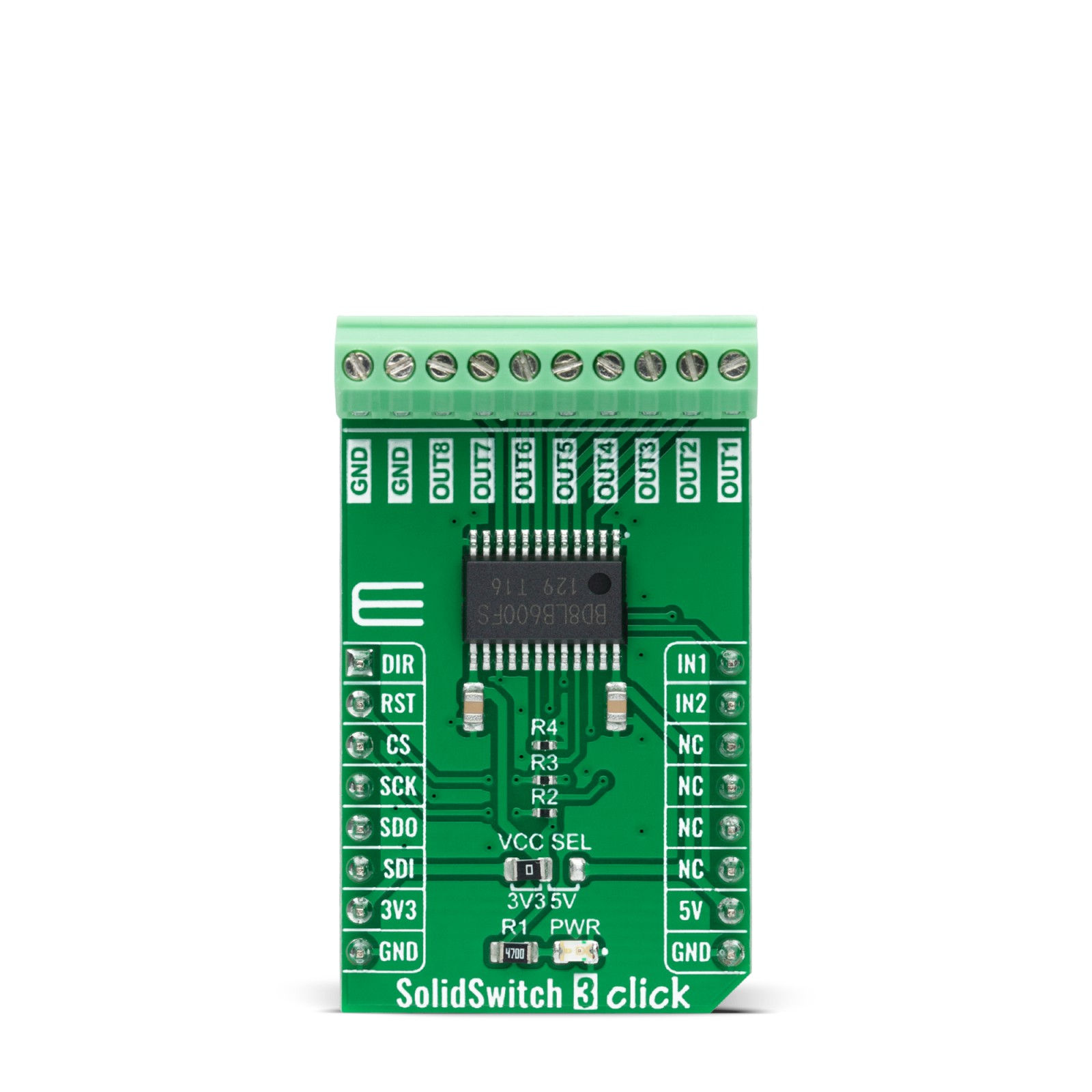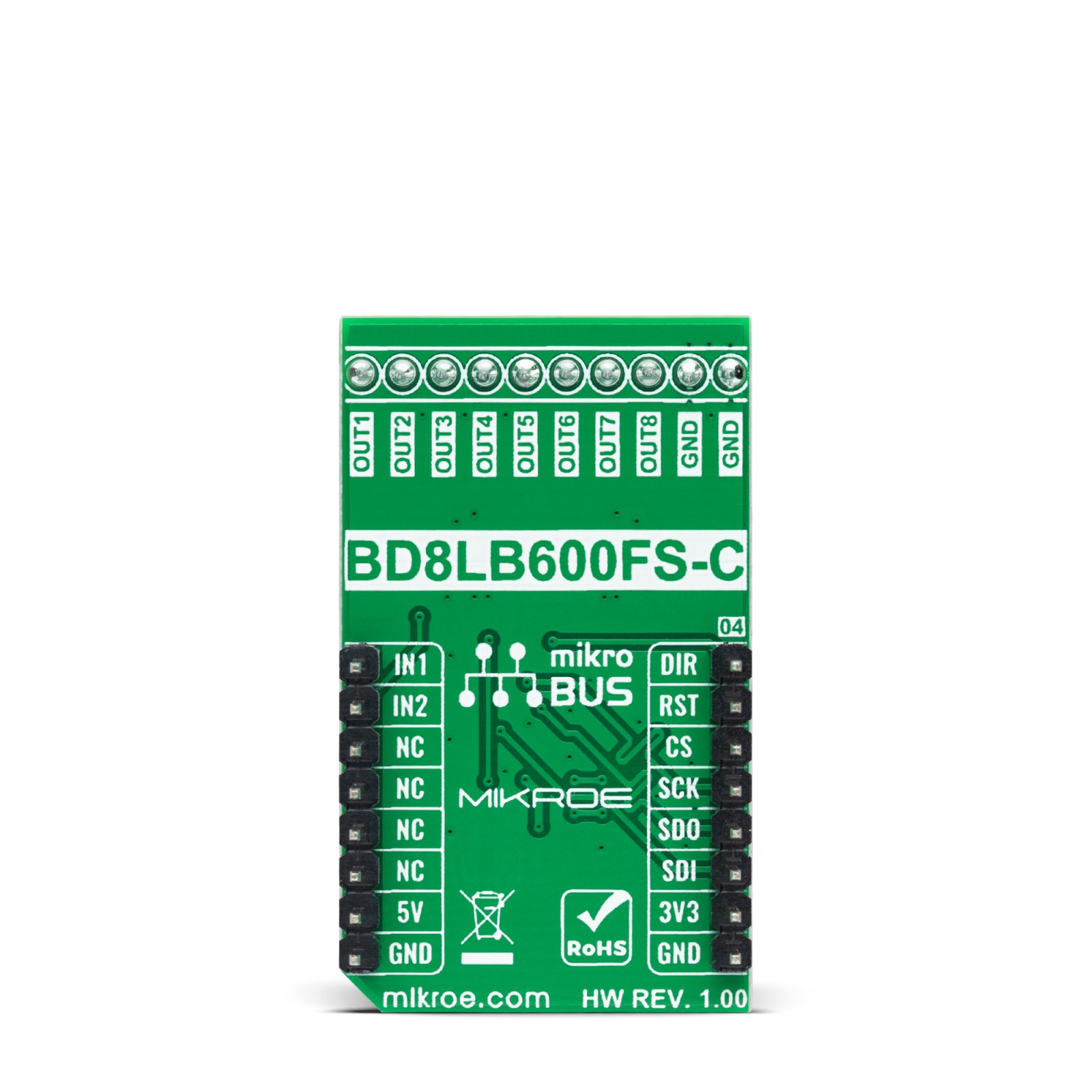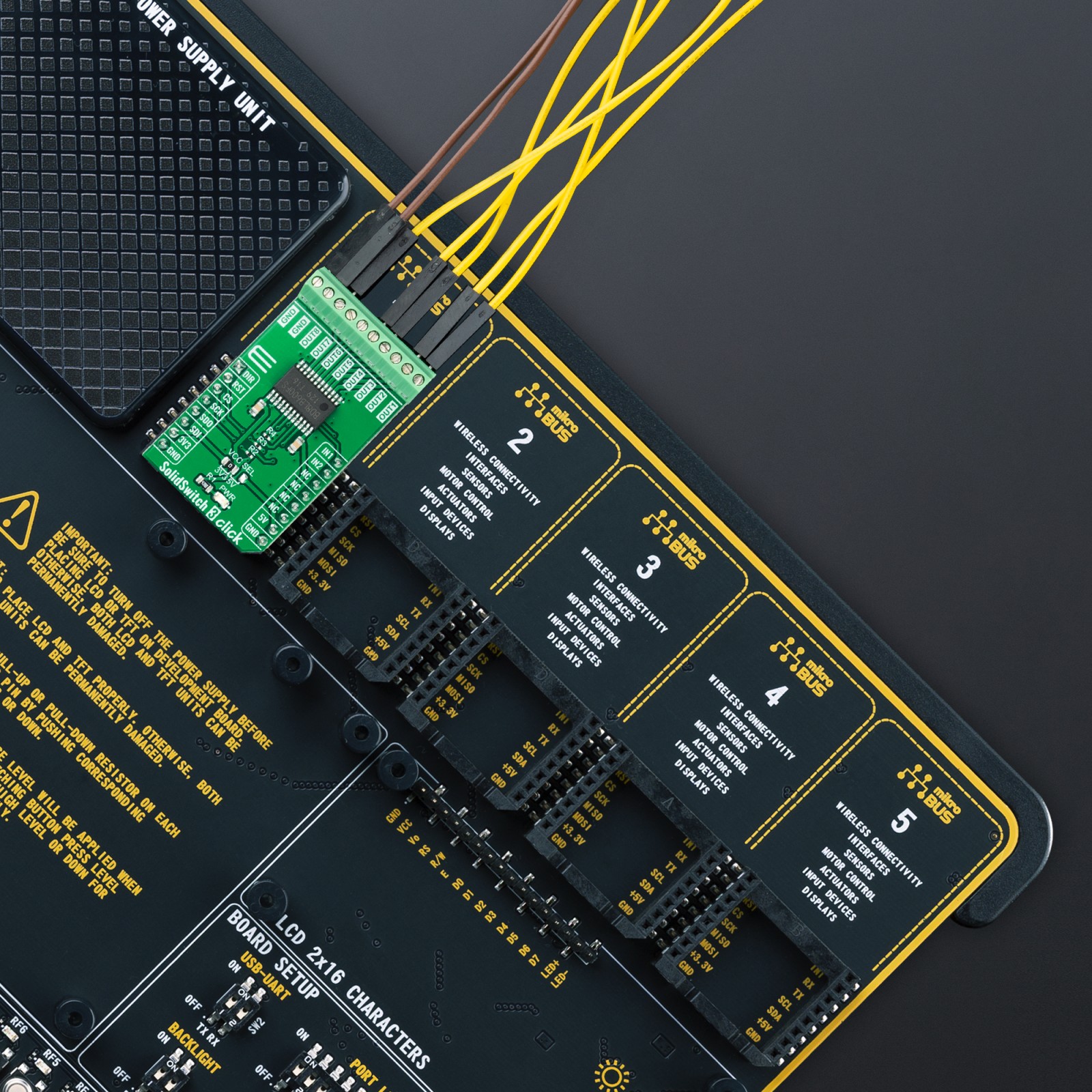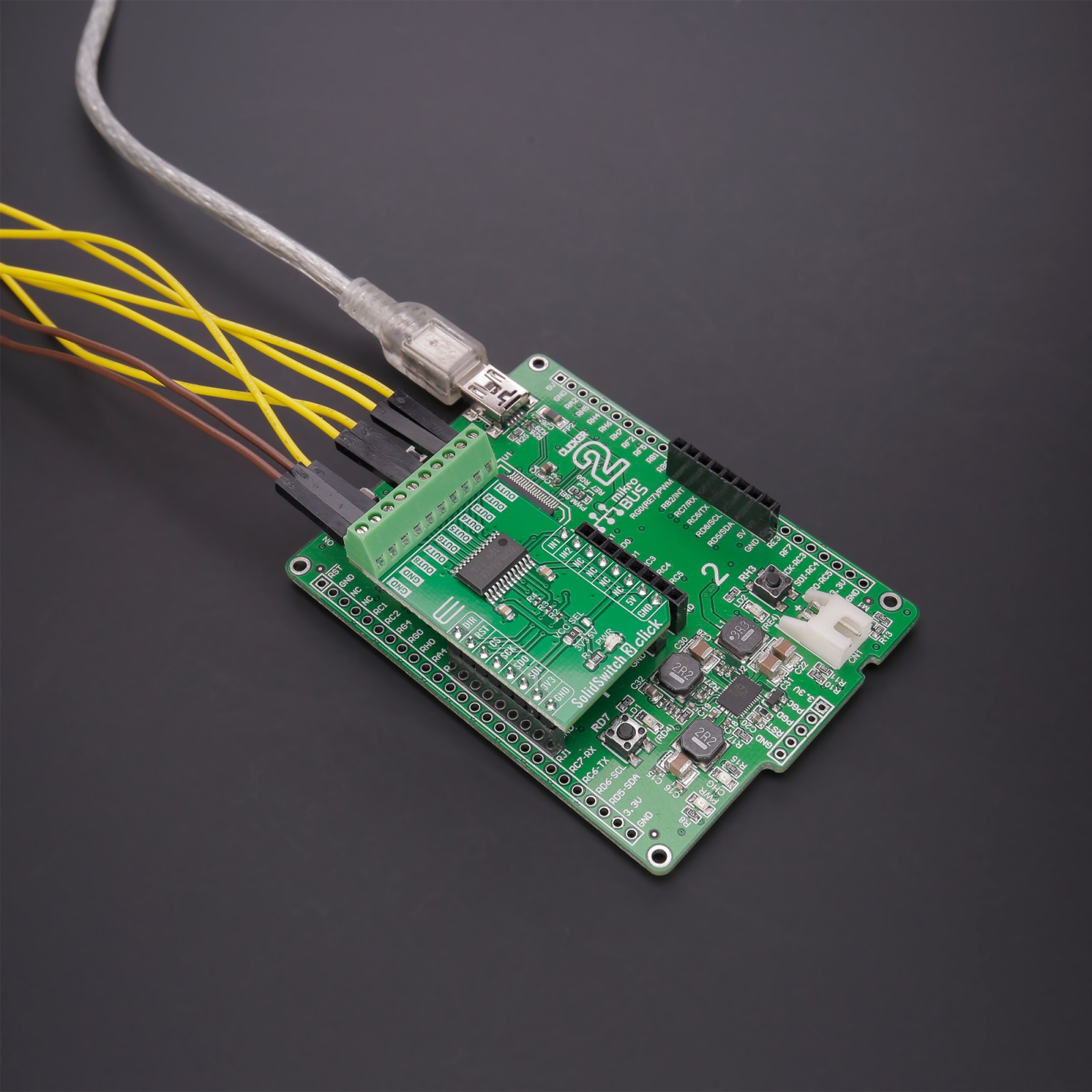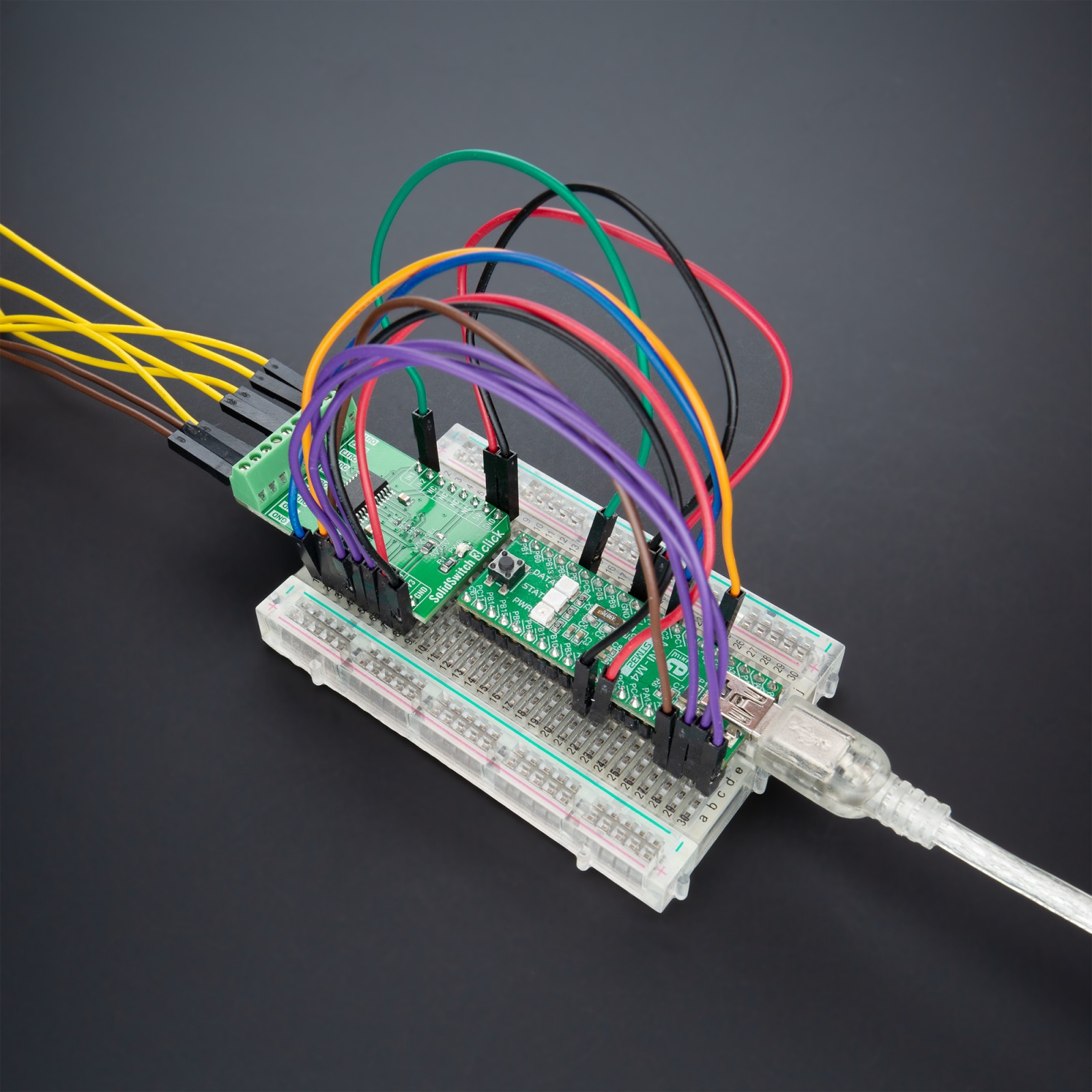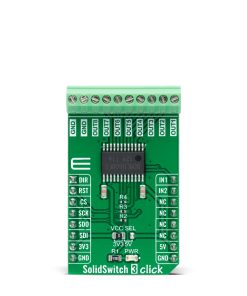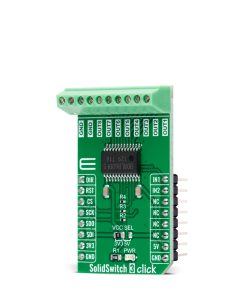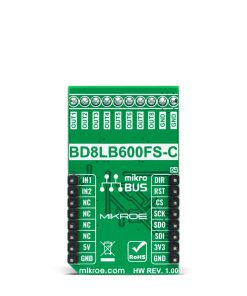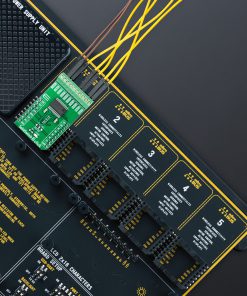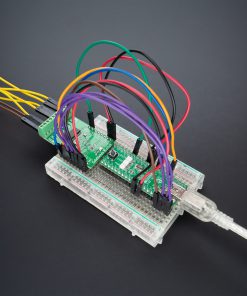SolidSwitch 3 Click
R465.00 ex. VAT
SolidSwitch 3 Click is a compact add-on board that contains a load switching device. This board features the BD8LB600FS-C, an automotive eight-channel low-side switch from Rohm Semiconductor. Every switch is controlled via an SPI interface and includes an N-channel MOSFET that supports a maximum current of 1A. The BD8LB600FS-C also has built-in protection circuits, namely the overcurrent, the thermal shutdown, the open-load detection, and the voltage lock-out circuits. Moreover, this device also possesses a diagnostic output function during abnormal detection. This Click board™ is suitable for driving resistive, inductive, and capacitive loads.
SolidSwitch 3 Click is supported by a mikroSDK compliant library, which includes functions that simplify software development. This Click board™ comes as a fully tested product, ready to be used on a system equipped with the mikroBUS™ socket.
Stock: Lead-time applicable.
| 5+ | R441.75 |
| 10+ | R418.50 |
| 15+ | R395.25 |
| 20+ | R380.37 |

